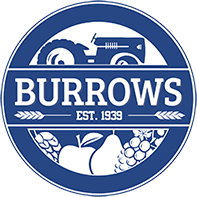Safety Guide for Operating a Baler
Whenever you’re working with heavy equipment, you should be prioritizing safety. This includes a baler. This machine can be dangerous and cause damage, injuries, and worse if safety isn’t practiced. At Burrows Tractor, we want you to stay safe when operating your baler. That’s why we’ve created the following baler safety guide. Keep reading to learn more, and give us a call if you have any questions or you want to see some equipment for sale. We are proud to have locations in Washington and Oregon.
Train the Operators
One of the most important things you can do to practice safety on your work site is to train anyone who will be operating the baler. The operator needs to be familiar with the controls and processes of the machine so they can optimize the equipment and operate it safely. Training is necessary even when you’re just upgrading your baler. This is because there could be new changes that may throw off the operator.
Regular Inspection
Another important part of baler safety is conducting regular inspections to ensure the machine is running properly. You’ll need to see if any parts are damaged and in need of repairs. If you notice issues like rust, leaks, or electrical problems, confront these as soon as possible. Even small issues can cause big problems in terms of safety. Follow a maintenance schedule and consult your owners manual for information on what tasks need to be done.
Machine Guarding
According to OSHA, the rotating parts and points of operation of certain equipment need to be properly guarded before being used. For vertical balers, this means working gates need to be manually closed and doors should have side mounts and slow-release mechanisms. These regulations are put in place to keep you and those around you safe. For horizontal balers, there must be guards over the top of the ram and around tier parts.
Lockout/Tagout Procedures
A jammed baler can pose a safety threat. If you have to unjam the machine, power it off and follow the OSHA’s lockout/tagout procedures. These steps should include shutting down, isolating, blocking, and securing power to the machine. One person should be in charge of keeping and moving lockout/tagout devices so they’re easy to find.
Warning Labels
Another simple safety tip is to make sure all warning labels on your baler are visible. These are here for a reason after all!
We hope this guide helps you stay safe when operating your baler. If you want any more tips or you’re looking to buy some new equipment, contact Burrows Tractor at one of our locations in Oregon or Washington. We look forward to helping you with all of your heavy machinery needs!
